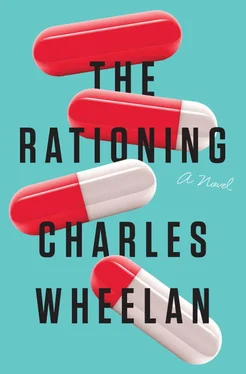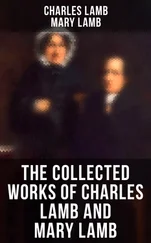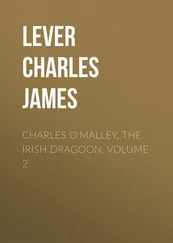Yes, Larry Rowen sought to trade his stolen Dormigen for cash (from rich men) and sexual favors (from beautiful women). “I wanted them to respect me,” he explained at his arraignment. Rowen’s advertisement in the Hollywood Reporter intimated as much: Safe, plentiful supply of Dormigen. Only the rich and beautiful need apply. Yes, he really ran that ad. And yes, FBI agents arrested him one day after it appeared. According to court documents, however, he had already sold six doses of Dormigen and at least two of the buyers were women. The identities of the buyers were kept confidential—sealed by the court. Anyone who really needed Dormigen at that point could still get it. We had not run out yet. The good news is that Rowen’s clumsy sales effort inspired law enforcement to mount a nationwide sting operation. It was not terribly difficult to pose as buyers, track the Dormigen back to its illicit source, and arrest the dirtbags like Larry Rowen who were selling it.
As the President flew toward Canberra, I became involved in an unfortunate communications snafu. Jenna and I did not see a movie, but we did continue our walk, still trying to piece together the mysteries of the colored binders. Jenna graciously invited me back to her apartment, where we continued our conversation. It was clear to both of us that I needed sleep more than anything else. I had been awake for fifteen hours. The radio and television interviews had been exhausting. My mind was moving at three-quarters speed. I took a nap and made the unwise decision to turn off my assorted communications devices, thinking it would just be a short power nap, fifteen or twenty minutes. The timing could not have been worse; several members of Congress showed up at the NIH office and demanded a personal briefing from the Director and me. There are a hundred reasons why members of Congress should not show up in the middle of a crisis and expect answers, not least because it wastes valuable scientific time. Still, there they were, sitting in the Director’s office, expecting answers from those of us whose time would be better spent generating those answers.
The Director tried to reach me while I was sleeping. Tie Guy filled in for me and answered the basic questions. The important thing to recognize is that nothing about this unfortunate incident affected our scientific approach to the Outbreak. No time was lost. If I had not carved out some hours to refresh myself, I would have been answering basic questions for some of the Speaker’s congressional minions. Their pride was wounded—this I understand—and I was remiss in turning off my devices. But the finding by the Outbreak Inquiry Commission that “the top NIH adviser went AWOL at the peak of the crisis” is just political hyperbole.
In fact, I stepped out of the shower reinvigorated and with a plan for moving forward. I turned on my secure phone and saw the series of frantic messages from Tie Guy and the Director. I was still wrapped in a towel when I called Tie Guy back. “Where the hell are you?” he answered.
“I just needed some sleep,” I said truthfully. “And I have an idea.”
“Well, if you want to explain it to six members of Congress, they just left.”
“That’s a waste of our time right now,” I said.
“Not yours,” Tie Guy answered angrily, though he was already starting to simmer down.
I shared my unorthodox thought: “Maybe we just need to expose these people to the dust mite. Have you thought about that? Right? If the pattern is—”
“Of course I thought of that,” he interrupted. “How could I not think of that?”
I ignored him and continued. “ Capellaviridae turns virulent when people with the virus are no longer exposed to the dust mite that carries it. So maybe the dust mite is preventive somehow?”
“Yeah, that’s one possibility,” Tie Guy agreed. “But how? And why? I sent that idea up the chain yesterday afternoon but I can’t get anyone to bite.” Tie Guy had been curt before, even rude, but this was the first time he sounded patronizing, or maybe just angry.
“What’s the harm of trying the dust mites?” I asked.
“That’s what I said,” Tie Guy replied, still peeved. “But think about it. If someone has the virulent form of Capellaviridae , they can still be treated successfully with Dormigen. Who would want to forgo that for some experiment with dust mites?”
“But what’s the worst thing that could happen if we try?”
“The worst thing that could happen is that the dust mites have no effect and people get sick enough so that Dormigen is no longer effective and then they die.” He changed his voice slightly, imitating the NIH bureaucrats with whom he had obviously discussed this: “The NIH will not do a human trial when a safe, proven alternative exists and we have no theory or evidence to suggest the alternative treatment will be effective.”
“You asked yesterday?”
“Yeah, right after I saw the data on who is becoming sick,” Tie Guy explained.
“But that was before they knew about the Dormigen shortage,” I pointed out. “Everything is different now. We have a safe treatment, but it’s going to run out. What’s the harm in testing something that might work?”
“That’s true,” Tie Guy conceded. “But we still need a theory. We have to have some explanation for what’s happening here. Why would people get sick from Capellaviridae when they are no longer around dust mites? And why would reintroducing dust mites make them healthy?”
“If it works, we can figure out the theory later,” I said.
“We don’t have time to do any meaningful trial,” Tie Guy declared. “ Capellaviridae is not fatal most of the time anyway, so it would take a long time to figure out if the dust mites have any real impact. Besides, I think it’s a dead end. There’s a confounding variable out there that we haven’t figured out. The data are right, but we’re not hearing what they are telling us. ”
“Why can’t we just test the dust mites?” I insisted. “We need a Jonas Salk.”
Tie Guy’s tone turned caustic. “Really? Tell me how that would work.”
My mind worked slowly as I tried to figure out why Tie Guy sounded so dismissive. Salk was the inventor of a polio vaccine. Like other successful vaccines, it works by introducing a weakened form of the virus to the subject, whose body then creates antibodies to fend off the full-strength version of the disease. Salk offered himself and his family as test subjects. As my mind ground away slowly, Tie Guy continued, “Why don’t you give yourself the virulent form of Capellaviridae and then try the dust mite cure?”
My mind caught up to him: We still had no understanding of when or why the virus turned virulent, so even the notion of exposing someone to the harmful form of the virus was beyond us. I couldn’t test the dust mite cure on myself because I did not know how to make myself sick with the virulent form of Capellaviridae in the first place. “I’m a little worn down,” I said.
“The media stuff looks awful,” Tie Guy said, finally betraying some sympathy. There was a brief pause and then he asked, “Don’t you think the Chinese are going to pony up the Dormigen in the end?”
He had never asked me about any deliberations beyond the science. At that point, I had not been privy to the discussions on Air Force One, but I had heard enough at the White House to know that the President would likely refuse any offer that required abandoning the South China Sea Agreement. I took a seminar on negotiations in graduate school, a class where we broke down in pairs and did mock exercises. One of the things I learned is that sometimes there is not a deal to be had. Fifteen different pairs of negotiators read a set of secret instructions—half of us were banana plantation owners and the other half were fishermen—and somehow we were supposed to figure out how to split limited water resources in our village. All fifteen teams returned to the classroom ninety minutes later, and not one of us had managed to come to agreement. There just wasn’t enough water. That was what we were supposed to learn from the exercise.
Читать дальше












